




By Jon Rawlinson
Te Kūiti’s loss could be Te Awamutu’s gain if a proposed change by Hato Hone St John goes to plan.
Alarm bells have been sounding for some time in Te Kuiti over fears the town’s only ambulance will head north to Te Awamutu.
St John was poised to deliver its prognosis at a meeting yesterday – after this edition went to press.
A document sent to staff outlines a plan and changes to be applied from March 31.
“With the proposed move to start and finish the Te Kūiti vehicle from Te Awamutu station, the vehicle will immediately travel to Te Kūiti to be based there,” the document says.
“Forty-five minutes from the end of the shift it will… travel back to Te Awamutu station to end its shift.”
Difficulty recruiting people to be based in Te Kūiti is given as the reason behind the move.
‘Recruiting is harder to achieve in the more geographically remote areas… Historically and typically, the majority of staff who cover the Te Kūiti roster do not live in, or near, Te
Kuiti and they are travelling considerable distances to commence their shift[s].
‘We believe this change will greatly enhance recruitment and retention for this roster which serves and benefits the Te Kūiti community… Te Awamutu will be more accessible/attractive to a greater number of staff to provide additional shift cover during roster gaps.’
Mark Quin from the NZ Ambulance Association is arguing against the move.
“Having worked in the service for 25 years, I think the community may suffer.
I’ve put a submission in and told them my thoughts – not to [relocate] because it’s another resource out of the community, it’s another resource gone that you’ll never get back.”
Waitomo mayor John Robertson has been assured such changes will not prove costly.
“They [St John] have promised me that whatever changes are made it will not decrease the service level in our district,” he said. “The way they described it to me was that it will be driven down from each morning, first thing. That was a proposal, which I suspect they’ve been consulting on.”

By Mary Anne Gill
The tense relationship between police, liquor licensing officials and Cambridge Raceway over the drunken behaviour of patrons two years ago was laid bare at a hearing this week.
At stake is the renewal of the trotting company’s on licence and its extension into a grassed area at its Taylor Street premises, something the police, Medical

Officer of Health and Waipa licensing inspectors oppose.
Health officials were a no show at the two-day hearing, but senior sergeant David Hall used the Night of Champions event on April 14, 2023, to illustrate why police think the company was an unsuitable candidate.
Two patrons were removed and 10 arrests made for fighting, disorderly and threatening behaviour.



Chief executive Dave Branch argued changes made by the Raceway last year, including boosted security and bringing in an independent company to run the general admission areas, demonstrated responsibility and supported a finding of suitability.
The hearing was ongoing as The News went to press and a decision is not expected in time for a special licence hearing next week for the Night of Champions event on


April 4.
Murray Branch, a consultant for Harkness Henry and Dave Branch’s father, criticised the police response to the 2023 event, arguing that penalising Cambridge Raceway by cancelling its license would put the business and community facility at risk.
He suggested Waipā District Council inspectors sent “misinformation” to agencies like the police and Ministry of Health.
The licensing agency wants several conditions imposed if a new on license is granted. They include Raceway staff making daily swoops around the neighbourhood looking for rubbish, noise and alcohol management plans be added as conditions and the grandstand have a different designation depending on the type of activity.
• Go to teawamutunews.nz for further updates from the hearing.



By Jesse Wood
True Islam New Zealand held their first Holy Qur’an Exhibition in Te Awamutu at the Burchell Pavilion on Saturday.
The Auckland-based organisation has run these events for 12 years and two or three held across the country annually.
Two exhibitions have been in Cambridge as well as a visit to Hamilton.
“We have come to Te Awamutu with the first event of the year. We are planning to host one in the South Island next, but we haven’t decided the town,” Ahmadiyya Muslim Community missionary Iman Shafiq Ur Rehman said.
“We have already had stalls here at the Sunday markets. So, we have come a few times, but it’s the first time having this whole exhibition here.”
In 1989, the head of the Ahmadiyya Muslim Community, the late Mirza Tahir Ahmad, visited New Zealand.
He encouraged the work to begin translating verses of the Qur’an into Māori.
With help from several Māori language experts at the University of Waikato, Pakistani teacher Shakil Ahmad Monir is credited with the translation.
While working in Nigeria, Monir taught himself to read Te Reo with an English to Māori dictionary, a Māori Bible and a Māori grammar book.
In 2010, the first half of Kurānu Tapu book was launched, followed by the full version three years later.
This is the most recent Qur’an translation. Ur Rehman said members of the community have translated the full book of the Holy Qur’an into 75 languages.







The exhibition displayed more than 40 translations of the Holy Qur’an, including a Te Reo Māori translation - Kurānu Tapu.
“The Te Reo translation is always the centrepiece of our exhibitions,” exhibition manager Saqib Ahmad said.
“This remarkable work was undertaken by a dedicated volunteer over a period of 20 years.”
All versions have been translated straight from Arabic.
At the Te Awamutu exhibition, Ur Rehman held short seminars on topics including The Qur’an and the issue of terrorism.
These addressed common misconceptions, along with displays about Islam’s teachings on peace, harmony, and interfaith dialogue.
“Our mission is to remove

News/Editorial
Roy Pilott editor@goodlocal.nz
027 450 0115
Mary Anne Gill maryanne@goodlocal.nz
021 705 213
Viv Posselt viv@goodlocal.nz
027 233 7686
Chris Gardner chris@goodlocal.nz
027 231 7007
Advertising Director
Janine Davy janine@goodlocal.nz
027 287 0005
Owner/Publisher
David Mackenzie david@goodlocal.nz
Office/Missed Deliveries
07 827 0005 admin@goodlocal.nz
Students are again regularly riding at speed on pavements in the main shopping areas of town on their daily commute. This poses a risk to other pavement users - especially after school - when many customers are entering and exiting retail shops.
Last Thursday afternoon, Constable Anderson and I conducted a foot patrol focused on addressing this issue. We stopped and spoke to several youth, redirecting them to the available cycle paths with the alternative of dismounting and walk their bikes through town.
We also reminded them to wear their cycle helmets when riding. They all appeared to take our message on board and complied. Parents, please reinforce this by encouraging your children to use the designated cycleways when cycling to and from school.
Last weekend I worked at ‘Meatstock” along with several prevention team colleagues. The bbq and music event was held over two days at Mystery Creek events centre.
It was great to see that everyone had a good time whilst being responsible, with only two people, out of a crowd of around 10,000, removed for disruptive behaviour.
Highlighting a good catch, a young person was reported in Cambridge as



having presented what looked like a firearm at a member of the public after he was witnessed doing burnouts at a local reserve. The youth was identified and spoken to. A subsequent search of his address located an air pistol and drugs. He is going through the Youth Aid process accordingly.
And finally, yet another scam has caught out a couple of locals this week. Victims reported receiving a whatsapp message from a person they didn’t recognise, purporting to be their family member who had damaged their phone and now had a new number. The person continued on to say their internet banking was blocked and they needed to pay bills urgently. They requested the victim transfer a sum of money to a bank account provided. They said they would pay the money back when banking access was regained.
Believing the story, the victim transferred the money which resulted in further money being requested. At this stage, the victim realised something was wrong.
Please be aware of this scam and verify fully any new whatsapp or other messaging contact is who they say they are. Suggestions may be calling them or asking specific family details.
Jesse Wood misunderstandings. There are a lot of negative stereotypes about Islam. Sometimes people think it is the Muslim scripture that teaches all the violence we see projected in the media,” Ur Rehman said.
“We’re trying to bring the Qur’an, the Muslim scripture, before people. We have different translations here so that people can find it in their own language.
“We have key teachings, pull up banners and seminars. We try to show that the scripture teaches peace. That’s our mission.”
As a longtime volunteer for the organisation, Saqib enjoys the journey heading into new areas throughout New Zealand with the exhibition.
“It’s rewarding to see visitors engage with the different translations, ask questions and leave with a clearer perspective on Islam’s teachings of peace, tolerance and unity,” Saqib said.
“Every city attracts a different audience, and each interaction is an opportunity to build bridges, dispel misconceptions and foster a mutual understanding.”
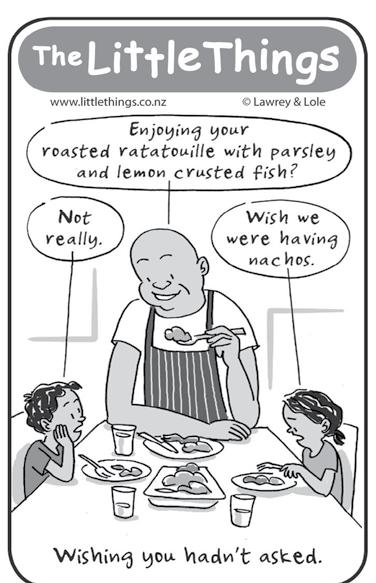






A significant good news health story was kept under wraps by Health NZ at the weekend. The opening of a regional renal centre by the Māori Queen Nga Wai Hono i te po was revealed in a statement to Good Local Media after the event. No media were invited to the event.
Waipā District Council says information only reports to councillors which provided a good source of news for readers of Good Local Media have been canned. “Most of the information-only reports are no longer being produced, as our review showed the bulk of the information was retrospective, operational and/or had already been made public via media releases and social media,” the council told the News this week.
Cambridge Raceway, Brooklyn Water Ski Club, Te Pahu Squash Club, Te Awamutu Football, Te Awamutu Gymnastics, Waikato Disc Golf and Cambridge Rowing have all worked with Sport Waikato to enhance community outcomes in play, active recreation and sport as part of Sport Waikato’s Everybody Out There and Active goal, general manager Regional Leadership Steve Dalgety told Waipā’s Service Delivery committee this week.
Waipā’s extensive public art collection has gone online at Te Awamutu Museum and includes indoor and outdoor artworks such as murals, carvings, mosaics, paintings, sculptures, photographs and other art mediums. See our story next week.
A colour run at Lake Ngā Roto on March 23 will help raise funds for Automated External Defibrillators (AEDs). Hato Hone St Jonh hopes to raise $15,000 at the event.
By Mary Anne Gill
A 34-page memo from Delivery Performance manager
Sherryn Paterson in an open forum last week helped Waipā councillors decide a seven council regional organisation was the better option for the district. Her memo was also the first opportunity for the public to appreciate the nuances involved in the water saga.
Waipā will be in the box seat of a regional model likely to be more attractive to the government than one with Hamilton city and Waikato district councils.
After weeks of meetings behind closed doors, Waipā opted to join a council controlled organisation (CCO) to deliver water and wastewater services with Matamata-Piako, Taupō, Waitomo, Ōtorohanga, South Waikato and Hauraki district councils. Thames Coromandel has not entered into a heads of agreement but is expected to join the other six soon.
Hamilton and Waikato, which had pitched a three-council partnership to Waipā the week before, will remain outside the regional model.
The Waipā decision must be
formally approved at its meeting on February 26 but given the council released a media release within hours of its workshop last week, there is little doubt it will be rubber stamped.
Consultation will then take place with the community from March 21 and a water services delivery plan lodged with the government by September as part of the Local Government (Water Services) Bill which will replace Labour’s controversial Three Waters legislation by midyear.
Smaller councils like Ōtorohanga and Waitomo would feel more comfortable with Waipā in the mix.
While there was no staff recommendation, the information presented made the response compelling.
Waipā will be the only highgrowth tier one council in the preferred choice whereas it would have been one of three in the other organisation.
“Waipā would be a ‘foundation’ shareholding council, while with the sub regional CCO, there is no clarity on whether Waipā would become a foundation shareholder,” said Paterson.
Hamilton and Waikato’s short
term focus on a two council model with the ability for other councils to join, was seen by Waipā councillors as a ‘big brother’ attitude.
Under the preferred model, Waipā would migrate its core water and wastewater businesses to the new CCO on day one – July 1, 2026 – and subject to employment processes, would include all operational staff.
The News understands that would involve at least 40 per cent of council’s total staffing.
“As a tranche one council, Waipā would have the opportunity to influence and impact the establishment and transition arrangements with the other shareholding councils,” said Paterson.
“This model has a wider rural and provincial focus, which will likely provide a great operational model, workforce, civil contractor and relationship benefits across the shareholding councils.”
Financial modelling for the regional water option shows efficiencies of $10 million over eight years, starting July next year, for the preferred choice, with none factored into the Hamilton-Waikato option until year five.

One of the leading lights behind the restoration of Kihikihi’s Alpha Hotel has come out in favour of a waste to energy plant in Te Awamutu.
Bill Harris is Hamilton based but is a member of two trusts operating around Te Awamutu which pay rates in Waipā.
In his submission to the Environmental Protection Agency board of inquiry due to be heard in June, he says he supports all parts of Global Contracting Solutions resource consent application to build and run a Waste to Energy Incinerator in Racecourse Road.
“I have spent time with the present landowner Chris Venn and his family who
I have found to be very genuine people,” he wrote.
“They are learned town and country citizens who spent considerable time, study and resources looking into this proposal before agreeing to even sell their land to Global Contracting Solutions.
“Likewise, I have thought long and hard about alternatives to landfill options for our waste and believe waste to energy is the best most present option we have. Zero waste is a good goal but at present there remains waste which as a country we are not able to recycle.”
He said he was not an expert in all the science of the application but had

Rosetown
watched and read about incinerators overseas.
“I have visited countries like Singapore where incinerators are used to exchange waste to energy and there are positive outcomes. I am not an air emission expert but I’m happy that if this consent did not meet all our national standards the applicants and this application would not have progressed even this far.”
Harris, who spent parts of his youth in Kihikihi recalled his grandfather worked for the council when it ran landfill rubbish dumps on Paterangi Road and in Kihikihi.
“As a youngster I spent many hours in the care of
my grandfather at these two dumpsites. I saw not just the size of these council run dumps but also what went into these dumps. Old tyres, stripped and unstripped car bodies, which in some case still contained fuel and oil. These old vehicles which were crushed, I believe will still be leaching into our whenua and waterways. In those days I recall we did manage to recycle bottles and some bikes.”
He suggested the proposed plant would provide an alternative to landfills, “which I strongly support… and anything that can in the first instance be recycled will be”.
He said he hoped many of the 60 jobs being created

would be filled by
“Those employees may not presently live within the district, but in the building and operation of this plant I hope more of our people who were driven from rohe will be able to return to Te Awamutu and the district.”




Great people, great food, great atmosphere. Enjoy what the club has to offer!
By Meghan Hawkes
When Emily Ahier was born at Pirongia in May 1911 it was around one month before her father, Aubin, died.
Aubin and his wife, Julia, now had eight daughters and one son but Aubin’s grip on life was precarious – internal injuries from a buggy accident were said to have turned into cancer.
The 57-year-old, hoping to recover, went to Waikato Hospital where he remained for some weeks. He was then brought to Te Awamutu, to the home of his sister-in-law, Mrs Miller. There was no hope though and Aubin died in his sleep in the early hours of a June morning.
Aubin had come to New Zealand in 1870, aged 16, with his uncle on the ship Sydenham, from their home Jersey in the Channel Islands. He settled at Pirongia and by his early 20s was in partnership with Mathias Asmuss trading as the firm of Asmuss & Ahier, Brickmakers In 1878 the partnership dissolved and Aubin took up carpentry.
In March 1883 Aubin, on horseback between Mr Finch’s hotel and the bridge, rode into a disturbance near Pirongia where the Māori Prophet Te Mahuki and about 40 of his followers were marching.

26. They lived in Te Tahi on Pirongia Mountain. Aubin continued carpentry with a brief foray into storekeeping and finally became a farmer. He also took a very active interest in sporting and municipal matters. As a pioneer there were few who settled under more adverse conditions than Aubin and it was to men of his stamp that the settlement and progress of the district were largely due. He was farewelled at a Masonic funeral at the Pirongia cemetery. Emily, known as Kim, the daughter born just before Aubin died, fell overboard from the yacht Yvonne in Cook Strait during the Wellington-Picton yacht race in 1946 and was lost at sea.
Club Facilities and Member Benefits
• Plenty of off street parking
• Rafters Restaurant
• Full TAB Service
• Gaming Lounge
• Pool and Snooker Tables
• Dartboards
• Kids Zone with gaming consoles and foosball table
• Live Entertainment
• Courtesy Van
• Members Draw Nights
• Meat Raffles
• Covered outdoor dining area
• Venue Hire at discounted rates
• Range of Social and sports groups available



Club Opening Hours Monday 1pm – 8pm Tuesday 1pm – 10pm
1pm – 8pm
1pm – 11pm
Te Mahuki had become involved in trying to turn back the tide of European settlement. Aubin fell from his horse and was then chased by the group for a quarter of a mile before they caught him and tied him by the hands and feet with tether lines. They made him sit down, then he was placed on his horse; two of his captors walking on either side of him towards Pirongia.
The tying made him sore and he was very frightened.
On arriving in Pirongia, the group halted opposite Finch’s Hotel, and Te Mahuki called loudly for John Bryce, Minister of Native Affairs, to come out.
An ambush of Armed Constabulary instead sprang out from behind Mr Oliver’s new store and quickly arrested the Te Mahuki and his followers. Aubin was rescued. At the Auckland Supreme Court the prisoners were found guilty of common assault and were charged with creating a riot and tumult at Pirongia and sentenced to various terms of imprisonment with hard labour.
In 1890, Aubin, 36, married Julia Berry,

By Mary Anne Gill
Events like the Lions Trash n Treasure market help fine tune the skills of the Cambridge and District Pipe Band who are regulars at events like the market and the Christmas Parade. They skip the market if
it’s raining heavily, but not at the parade in Cambridge where rain the last two years has resulted in hard work afterwards for the bagpipe players cleaning their reeds and drying out the instruments’ bags.
The band practices every week and for special events
– like Christmas parades - join forces with their Te Awamutu and Te Kūiti counterparts.
“We’re all a big family,” said member Robyn Irving looking towards Te Awamutu tenor
and The

By Jesse Wood
Longtime volunteer
Zelda Nortje has taken over the reins of Lovings Arms, which has supported thousands of parents and caregivers across the Waikato.
Since 2014, the Te Awamutu-based charity helped more than 6000 babies and their families with clothing, bedding, nappies, toiletries and items such as cots, car seats and prams. The organisation covers
a circumference of an hour away from Te Awamutu but has also serviced other areas including Taumarunui when volunteers are passing through.
Loving Arms has provided close to $6 million worth of clothing and equipment.
Last year alone they helped 1437 families.
After 10 years at the helm, founder Sharni Budd stepped away last June due to health reasons.
“It actually started a few years earlier than 2014. It
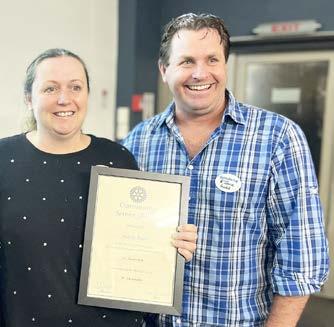


was just my wife saying, ‘I can help you’. There was a 17-year-old mum about to have a baby and had nothing,” co-founder and board member Jamie Budd said.
“Sharni put out her feelers on social media for some items and having a large family, we also provided some. More items kept arriving and then another mum popped up.
“There were quite a few families that we helped before Sharni birthed Loving Arms officially. Then we started capturing information as we became a charity.”
Zelda was by Sharni’s side for nearly seven years and was the right fit for the operations manager role.
“I met Sharni on the side of a soccer field in Te Awamutu. I saw one of the first newspaper articles,” Zelda said.
“I had a blanket to gift her. I always feel that I want to do whatever God puts in front of me. Loving Arms was run out of a container at Zion Church at that stage.
“I started with volunteering, some washing at home and sorting clothing. It progressed and we became good friends.


“It was really nice seeing Sharni’s journey through it. All the decisions she made, all the new things that have come along. She’s taken one thing after the other in her stride. I’ve been there for the journey but not necessarily carrying the load.”
Zelda said it’s heartbreaking because there’s so much need in the community, but it’s amazing they’re able to help.
“There has been a lot of work from all the volunteers, lots of behind-the-scenes prayer and plenty of support from the community.
“It means a lot that we get to do that.”
Jamie said it’s been huge to have Zelda step up with the same heart as Sharni.
“Loving Arms is Sharni’s baby. She birthed it, loved it, and put everything of herself into it. To know that Zelda has been here for eight years, and Sharni could step away and the heart of it can be carried on is tremendous,” he said.
“Having a community like that who picks up the ball and carries it is amazing. It’s not one person; it’s a community that are doing this together.”
There have been countless volunteers since the project

started.
They enjoy the experience because it’s not a one size fits all, they are encouraged to use their strengths.
At present, there are about 26 volunteers involved including a delivery driver, sorters, washers, sewers and packers.
“You couldn’t do this without the community and our lovely volunteers. We feel like a family, everyone does as much as they can to help wherever it’s needed on that day,” Zelda said.
“I feel very support by our Loving Arms board members and the Budd
family.”
Zelda said if families need help, ask for help and Loving Arms can help, they will.
“It’s the starfish story. For this family that we’re packing a box for now, that’s going to make a difference.
“It’d trying not to look at the ones that we might miss because we can’t get there fast enough.
“But for every family that gets something, every story we hear back and every box that goes out, it’s awesome to know they are being helped and there’s a bit of a burden taken off of them.”












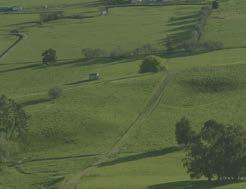


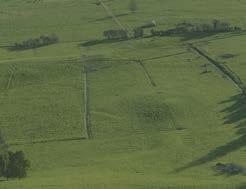


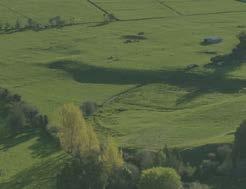

Learn more at www.waipikolanding.co.nz
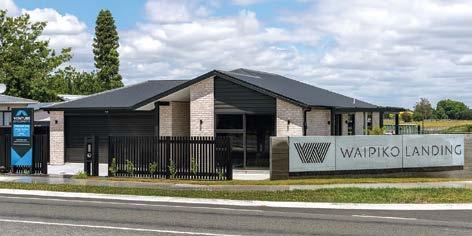






952 Cambridge Road, Te Awamutu
Explore our amazing show home, perfectly positioned in a prime location, close to everything you need.


Chat with our team and get inspired for your future build. Enjoy complimentary nibbles and refreshments while you explore. See you there!
Explore our amazing show home, perfectly positioned in a prime location, close to everything you need.
Chat with our team and get inspired for your future build. Enjoy complimentary nibbles and refreshments while you explore. See you there! Sunday 23rd February 12.00pm - 4.00pm
952 Cambridge Road, Te Awamutu Sunday 23rd Feb 12pm - 4pm
By Roy Pilott
Antifluoride campaigner and local body politician
Kane Titchener is celebrating New Zealand First’s call for a referendum to review the move to put decisions over fluoride into the Ministry of Health’s court.
Winston Peters accepted Fluoride Free NZ’s petition - that the House of Representatives stop water fluoridation – last week and on the same day New Zealand First introduced a member’s bill that would repeal the Health (Fluoridation of Drinking Water) Amendment Act 2021 and mandate councils to hold binding referenda.
The Act is the legislation which authorised the Director General of Health to mandate the fluoridation of local water supplies –and saw outgoing director general Ashley Bloomfield make orders to a host of councils, including Waipā, which was told to add fluoride to the Cambridge supply.
The district council is abiding by the demand, but Titchener, deputy chair of the Te AwamutuKihikihi Community Board has consistently called for councillors to resist.
Titchener hosted a meeting in Cambridge last week where US lawyer Michael Connett, who scored a significant Federal Court case win for anti-fluoride campaigners, spoke to a full Cambridge Town Hall.
In the US a judge, Edward Chen, ruled plaintiffs had proven fluoridation of water at 0.7 mg a litre - the level prescribed in the US and used in New Zealand –“poses an unreasonable risk of reduced IQ in children”.
“Everyone who attended that presentation is now up to date with the latest science,” Titchener said. “It just can’t be denied any longer that fluoride is a neurotoxin and should not be added to the water supply. We are calling for a moratorium and a public inquiry.”
Winston Peters said of the party’s bill the only people who would oppose it are “those that oppose democracy” – but there is no indication National MPs would support it.
National made the first move a decade ago to remove fluoridation decisions from local government to district health boards with then associate Health minister Peter Dunne saying water fluoridation was a healthrelated issue. It was shifted
instead to the DirectorGeneral of Health in 2021.
Titchener said invites to last week’s meeting went to all district councillors. He said one, Philip Coles attended, as did Cambridge Community Board members Jo DaviesColley and Andrew Myers. Coles left early.
The US judge ruled that “fluoridation of water at 0.7 mg per litre poses an unreasonable risk of reduced IQ in children.” Connett received standing ovations
at each of the packed eight public events throughout his New Zealand tour. He spoke to councillors from Whangārei, Kaipara, Far North, Tauranga, Western Bay of Plenty, Rotorua, and Palmerston North. Rotorua District Council have also called for a public inquiry after listening to Michael Connett’s workshop presentation. Whangarei District Council are taking legal action in order to not start fluoridation due to
the health concerns from neurotoxicity.
Meanwhile, Winston Peters stepped in to support Whangārei district councillors who are resisting the fluoride mandate this week. “It is chilling that we have got to a point in New Zealand where elected politicians are being threatened with imprisonment just for doing their jobs, standing up for democracy and asking for a vote,” Peters said.
By Mary Anne Gill
Concert pianist Michael Houstoun and blues singersongwriter Hammond Gamble have been confirmed for next month’s Cambridge Autumn Festival.
The pair will perform on consecutive nights at The Woolshed in Te Awamutu Lifecare Village. This will be their debut at the festival, which started 15 years ago.
The festival has a reputation for fostering young talent. This year’s group to watch is La Voce o Rotorua, a recently formed male trio likened to Sol3 Mio, singing opera, musical theatre and waiata.
The biggest public involvement is on March 29 with the Main Street Carnival and Art Market in Victoria Street and on the Square while the Repair Revolution has arrived at the festival with workshops and demonstrations on how to mend school uniforms and broken ceramics.
For those thinking of running away to join the circus, there is even a workshop on learning circus skills.
The festival starts and finishes in the Town Hall - on March 28 with the Art Exhibition and Sale and April 6 with Youth Orchestra Waikato taking inspiration from classical works that have become integral to popular culture, film and television.




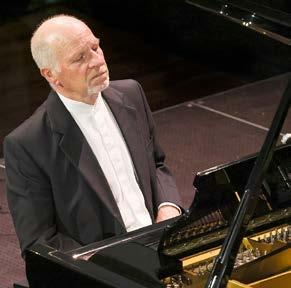








By Janine Krippner
Misinformation is not new. Sometimes confusion reigns and wrong information is innocently shared. Sometimes tabloids make clickbait headlines that are wildly misleading, so you visit their website, and they make money. Now we also have people on social media posting misinformation for likes in stressful and even dangerous situations. This situation is so urgent that I wrote about the topic online last week.
I am following the situation around Santorini, where there is real danger to people experiencing frequent earthquakes. This is a situation that is truly impacting communities and there is a risk that something worse may happen, like a larger, more damaging earthquake.
Now that we have AI and much more convincing fake videos to contend with, we must be even more cautious and sceptical, especially if we are viewing something on social media. So how can we tell?
Firstly, who is the source? Is it a trustworthy agency who checks facts? Is it an expert or trusted local - or someone who tends to post a lot of dramatic videos for likes with captions containing all caps and hyped-up language?
There seems to be a race to be the first to post about an eruption these days. The desperation to go viral might have something to do with it.
Does something seem off about the video? Is the colouring wrong? Does something about the physics, like water behaviour, seem a bit weird? Is the colouring saturated or a bit unrealistic? If there are people, is their behaviour odd? Are features blurred? AI generated images can get things wrong, like adding the wrong number of fingers. Are people responding as you would expect them to during an eruption?
There is a term ‘uncanny valley’ that refers to feeling ‘off’ when looking at something that isn’t quite real. Go with your gut and check again.
Looking at the landscape is important.

Santorini is a very recognisable island with steep slopes and the classic white buildings. Some people have shared a video of Whakāri with a gas plume.
EuroNews used reverse image search to identify our backyard volcano was standing in as a fake.
I’ve even seen an old computer-generated simulation of an Auckland volcanic field eruption shared with claims of It depicting past eruptions at other volcanoes in very different landscapes. That was made back when it was obviously not real… if you take the time to look.
What else is in the image or video? Is everything to scale? Make sure there isn’t any strange blurring between objects, or any areas that look too smooth or air brushed. Is there any text? There might be repetition of words or bad spelling if there is.
Sometimes it just takes slowing down and taking a few seconds before sharing something online, but it is getting trickier. We can point out when something isn’t right in the comments so that others can see it too. In hazardous situations we all have a role to play in making sure we are sharing good information.
We might be all the way over here in Aotearoa, but people being impacted by these events can see what’s posted online and this can cause very real distress.
By Tom Roa, Tikanga Advisor, Waikato University
I wonder how many of us applied for annual leave on the Friday, taking advantage of the Waitangi holiday to turn it into a long Waitangi Weekend.
I suggest that if we’re honest, that will have been how the vast majority of us regard Waitangi Day - enjoying the holiday, aware of the significance – and how can we not be with so much media – mainstream as well as social – attention to events at Waitangi and elsewhere? But I suggest the vast majority of us treat it essentially as another holiday.
The significance of Te Tiriti o Waitangi has been recognised with this holiday. And I know of no adult New Zealander who does not appreciate that significance in recognising the importance of Te Triti in our national consciousness.
For Māori Te Tiriti has long been a discussion point amongst us and other New Zealanders on marae and at Māori events.
I don’t envy the task of the Parliamentary Select Committee in their sifting through the thousands of submissions to them on the Principles of the Treaty of Waitangi Bill. I do suggest that this is merely a continuation of those conversations, unfortunately, in my opinion, a waste of parliamentary resources given that two of the coalition partners have indicated they will not support it through its second reading.

By Christine Bryant, Lay Minister, St John’s Anglican Church
Recently I read an article in The Australian newspaper about the cost of an aging population.

Rangiaowhia was an agricultural hub which sent produce not only to major townships like Auckland, New Plymouth and Wellington nationally, but also internationally to Sydney, England, and even to the goldfields of America. Indeed, the very first sacks of flour from the very first mill at Rangiaowhia were sent as a gift to Queen Victoria.
Pākehā tradespeople were welcomed by the Ngāti Apakura and Ngati Hinetū leadership in the later context of the second Māori King’s assertion that his friends came from all corners of the globe. They were the honest tradespeople, the shoemakers, the carpenters, the blacksmiths and the bakers of bread. Their contribution to the prosperity of Rangiaowhia was much celebrated by the hapū and iwi of the district as well as their visitors from other iwi who bore witness to the very important contribution of these people to the affluence enjoyed there by all. So much so that the newcomers took wives (and husbands!) from the local population and adopted their language and customs, partnering with Ngāti Apakura and Ngāti Hinetu to mutual benefit.
In our backyard here in the Waipā District more and wider conversations have been exploring the significance of the tragedy of Rangiaowhia where I and others assert that in the aftermath of the signing(s) of Te Tiriti o Waitangi, the potential of principled prosperity for the signatories of Te Tiriti was being realised.
But then the empire-builders followed the norm of that time which was with the waging of war for building empire. Cooperation, collaboration with the people who were already in that space didn’t fit with that model.
It made the oft-repeated point that the burden of supporting the elderly is falling on the next generation. It implied how unfair it was that “boomers” receive a pension that is unlikely to be available to the generations to come.
Now, I’m not too familiar with how the pension is computed in Australia, but I know it is more complicated than in New Zealand. Here it is straightforward: two or three months before your 65th birthday you can apply to receive the pension – It’s as simple as that. There are two factors in this implied resentment which are often conveniently overlooked.
Firstly, everyone who receives income, including a superannuitant, pays tax on it, and everyone pays GST on goods and services. Therefore, it is not true to say that retirees don’t contribute financially to society. They pay tax like all earners, and many have been doing so for decades.
Secondly, it is impossible to put a dollar value on the amount which retirees contribute to their communities in voluntary work. For example, I read in last week’s Te Awamutu News that a Menzshed is opening in Cambridge. A group of men have donated their time and expertise and renovated premises to provide a place for men to socialise and work on individual and community projects. The Menzshed in Te Awamutu has a great track record of undertaking tasks for the community, from repairing wooden toys for Playcentres to making possum traps for conservation work on Pirongia.
Dismissing the “elderly” as costly is
inaccurate and unjust. Many services in our community would not exist without older volunteers. Think of the Health Shuttle drivers, Food Bank, social support such as community meals, youth groups and Mainly Music provided by the churches, Meals on Wheels, Op Shops – all these are largely staffed by retirees.
Volunteers also work as hospital chaplains or visitors or serve meals and offer support in hospices. Members of Rotary, Lions, Altrusa, many of whom are retired, continue to fundraise for projects which will benefit the whole community. Within families, many benefit from the free childcare offered by grandparents, not forgetting, of course, the surplus produce from their gardens.
In John 2, we read of Jesus at a wedding in Cana. The host runs out of wine, so Jesus, urged on by his mother, turns the water into wine. It is such good wine the guests remark that the host has saved the best until last. One bible commentary likens this wine to our journey through life. Just as a good red takes years to reach its best, so we start out young in faith, full of raw enthusiasm. As the years pass, if we allow Jesus to work in us, we become at last like the good wine at Cana, rich, mellow and with much subtlety of bouquet.
Seeing older people as a financial drain is not helpful. We should celebrate all that they offer to society and consider them a blessing. Whether they are active or less mobile, they offer help to families, encourage young people realise their dreams, visit the sick and lonely and support those who are struggling. Without their efforts, many services that provide essential aid would struggle to exist.




Te Awamutu Golf Club pennants teams are striving to go one better in 2025 in the Waikato Pennants competition this year.
The club’s Handicap Matchplay teams have won their respective competition three years in a row.
Te Awamutu have two teams in the draw, playing in different pools, and the winners of each of the four zones progress to semifinal play offs.
Team 1, skippered by Alan Duncan were victors in 2022 and 2023, and Team 2, skippered by Howard Wynyard were champions in 2024. This year’s captain, Ivan Rigger, is planning to continue that trend and has a good core of players from the 2024 team available.
Te Awamutu have also entered teams for the Championship Matchplay, led by Adam Fursdon and the Handicap Strokeplay this year led by Rodney Morkel.
In 2024 both the championship and strokeplay teams just came up short in making their respective finals while Team 1 in the Handicap Matchplay draw just dipped out on making the finals. Victory there would have resulted in an all Te Awamutu final.
It’s rare for two teams from the same club to face each other in a final.
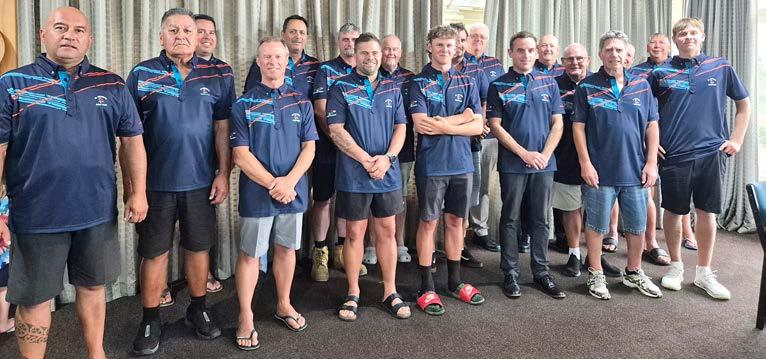
The championship and handicap matchplay format is played over a maximum of 36 holes in a day. The championship players play singles in the morning and afternoon while the Handicap Matchplay


competition has a foursomes (alternate shot) format in the morning followed by singles matches in the afternoon. Each team has six members.
The Handicap Strokeplay is a slightly
different format with a team of four playing 27 holes in a day. The best three of four nett scores are counted toward the team tally for the day. The first round of matches begin on Sunday.
By Jesse Wood
Ngāhinapōuri’s Dean ‘Weka’
Fullerton was part of the New Zealand polo team beaten 11-9 by England at Mystery Creek Polo Club recently.






The 14-goal North Island international test match drew spectators from near and far, and the Melbourne Cup even made an appearance.
The curtain raiser saw match John Paul Clarkin Bayleys team beat Kit Brooks’ Vosper Law line up 5.5-4.
Cambridge’s Missy Browne was a standout for Vosper Law, while a fierce competitor for the winning team was Georgina Duncan from Hunterville.
Cambridge High School Ava Bell, 13, performed the New Zealand national anthem before the six-chukka main event began.
Fullerton stood out for his side with much excitement coming from the crowd each time he neared the ball.
Coached by Clarkin, the home team also contained Edward ElworthyJones, Ethan Wade (Auckland) and experienced captain Glenn Sherriff (Gisborne).
It was Fullerton’s second appearance


for the senior New Zealand team and first at home.
Several generations of his family were there in support.
The English team of Jimbo Fewster, Ben Malasoma, Ollie Jones and Charlotte Pykett were grateful for the horses New Zealanders had let them borrow.
“New Zealand is a wonderful country.
There’s a lot of good people,” Fewster said.
Mystery Creek Polo Club president David Fullerton said they were thrilled to host the event.
“Hosting the English team was great for the club. It was also great to have so many of the local Cambridge, Te Awamutu, Ōhaupō people there for the evening,” he said.
By Mary Anne Gill
Waipā District Council looks set to make some radical changes to its District Plan to accommodate the burgeoning kiwifruit and horticulture industry.
Proposed changes include reducing road and internal boundary setbacks for protective structures over fruit from 15 to six metres, allowing transparent cloth as a colour option for the structures, and replacing shelterbelt shading rules with new height and road setback measurements. These changes, the 25th under the current plan, have been prompted by the influx into the district over the last three years of kiwifruit growers who established unconsented shelter structures.

Ōhaupō life styler Nick Jennings settled with the council last year following mediation. He had filed papers with the Environment Court over the council’s decision to let his neighbour in Parallel Road establish a kiwifruit operation. He argued that the expansion of the kiwifruit orchard around three sides of his rural property blocked his views and ruined his rural outlook.
Similar issues have arisen elsewhere in the district on land previously used for farming.
Policy planner Alice Morris presented the proposed changes at an elected members’ workshop last week.
Work on the plan change began last year. Planners reviewed shelterbelt planting rules, rural zone boundary setbacks, building coverage rules, and colour standards for shade cloth structures. They considered the impact of shelterbelts on neighbouring properties, road safety, and road maintenance. There was feedback from
more than 70 individuals and groups.
Morris emphasised the importance of enabling the “full use” of rural land for primary production while balancing the need to maintain outlooks, views, appearances, and cultural values.
Deputy mayor Liz Stolwyk said she hoped the suggested changes would be well communicated, suggesting after the original publicity two years ago, it had disappeared from people’s radars.
Mayor Susan O’Regan said the work had been tricky because it needed to balance all the competing values. Some of the setbacks had been “outrageous” so it was pleasing to see some compromise among submitters.
“But (Waipā) is nevertheless a rural food producing zone.” The plan will now be finalised and sent to iwi authorities before its adoption mid-year by the Strategic Planning and Policy committee.
More than 5000 copies of Farmstrong’s Getting Through book have been distributed around the country and another 5000 are being printed.
The book features the stories of more than 20 farmers, growers and industry leaders speaking after the cyclones and floods of 2023.
It discusses what it takes to get through severe weather events.
The book and an accompanying website includes a toolkit of mental skills and daily habits designed to help people manage workload, stress and pressure.
Farmstrong Programme Director Gerard Vaughan said the uptake of the book had been very encouraging and demonstrated how much the rural community valued the wisdom and experience of other farmers and growers.

“These resources are full of practical, actionable advice about what works and what doesn’t when you’re facing a long-haul recovery. That’s why we’re keen to get as many people across them as possible.”
“It is a new year, but with that comes the unknown. Getting Through is a tool for not just farmers and growers, but anyone facing uncertainty or tough times.
“I really encourage anyone visiting any of
the Field Days or shows this year to come and find us on the Farmstrong stand. We are always up for a chat, and we will have free copies of the book available for you to take home and read in your own time”.
Farmstrong is a nationwide rural wellbeing programme, was launched in 2015 by the Mental Health Foundation and rural insurer FMG with support from the Movember Foundation.


No longer just learning the ropes, Rylee Ward will be hoping to have the competition over a barrel during the annual Rural Games in Feilding next month.
The rodeo star, now based in Waipā having moved from Central Hawke’s Bay, will be going for glory as the pride of the

country competes in a diverse range of events, from the traditional to the avantgarde, including speed shearing, rodeo and harness racing, as well as gumboot and cowpat throwing just to name a few.
However, unlike most of his counterparts, Ward is up for more illustrious honours as a finalist in the New Zealand Rural Sports Awards, held as part of the festivities.
“This year’s nominations set a record for athletes and contributors,” convenor of judges, Paul Allison, said.
“The awards play a vital role in celebrating the outstanding achievements of rural sportspeople, from competitors excelling in their fields to those working tirelessly behind the scenes to ensure the success of these sports.”
In addition, accolades across further categories, including a Lifetime Legacy Award and Sportsperson with a Disability Award will be presented during a gala dinner on March 7.
Finalists: Sportsman of the Year, Jack Jordan (Taumarunui) –Timbersports, Tim Garrick (Gisborne) – Fencing, Blair Orange (Rolleston) – Harness Racing. Sportswoman of the Year: Steph Dryfhout (Tauranga) – Tree Climbing, Catherine Mullooly (Gisborne) – Sheep Shearing, Samantha Ottley (Christchurch) – Harness Racing. Young Sportsperson of the Year: Rylee Ward (Cambridge) – Rodeo, Carter Dalgety (West Melton) – Harness Racing, Karaitiana Horne (Raetihi) –Motocross.


By Stuart Kneebone, Waipā-King Country Councillor Waikato
Regional Council recently confirmed its proposed Annual Plan budget.
Thanks to a lot of good work by our chief executive and his staff, careful consideration by councillors and following a series of workshops with councillors last year, we collectively managed to reduce the rates increase proposed in the Long Term Plan from 8.6 per cent down to a proposed 5.9 per cent.
The proposals associated with this change will be consulted on in April.
One key issue that I do want to highlight is the changes we are making to the way public transport is managed and funded. Regional councils are responsible for the planning, management and provision of public transport in the region. Traditionally this has often meant that district and city councils have collected the rates funding for public transport in their area or district and handed this over to the regional Council to operate the service. This has invariably meant it was a complicated system with a range of different approaches in terms of how the rates portion to fund public transport was collected. This also made it challenging to plan transport across the region, and didn’t contribute to providing an ideal network of services throughout the Waikato.
In an effort to improve things, the regional council resolved via the recent Long Term Plan consultation process to take over the rating to fund public transport across the region.
As a reminder, there are essentially three components that make up the public transport funding system. One is the fare component paid by the actual bus users. The remaining portion (which is effectively the main component) is 51 per cent funded by the government’s National Land Transport Fund (road users) and the remaining 49 per cent is funded by councils (ratepayers). The rates component has

traditionally been collected differently (for example, general rates, targeted rates or per-property charges) depending on the approach of the particular council.

With the regional council taking over the rating across the region for public transport, a decision has to be made as to how we do this. Last year the council spent some time engaging with other councils across the region to understand their views. Following this consultation, we are proposing to rate for public transport across the Waikato via a per-property charge applied to all ratepayers across whole region. There is also an option for a capital value charge to apply for Hamilton City ratepayers. This perproperty charge will be different, depending on which part of the region you are in, given this affects your likelihood and ability to use public transport. This does mean that areas with no bus services do pay something, recognising that public transport does take cars off the road, and thus does provide some benefits for everyone.
In addition to this, New Zealand Transport Agency has directed that councils are expected to increase the private share component (bus fares) of public transport funding. In response to this, the council is proposing to increase public transport fares by 11.4 per cent from July 1 to reflect inflationary increases in public transport operating costs and to meet the government targets. Fares will then increase by 10 per cent a year in the four subsequent years. Formal consultation on these options will be undertaken in March or April of this year, providing an opportunity for public feedback to council. We will be looking to adopt the 2025/26 annual plan budget in May.














By Rachael Mitchell
A shaded ‘natural’ stream will have an average water temperature of around 16°C but open, slow flowing waterways may have temperatures peaking at around 30°C in summer months.
Research has shown that one kilometre of good stream bank shading will cool a stream by 5°C and there is greater impact on streams with less water (making them easier to cool).
As water temperatures fall, dissolved oxygen increases – by around 20 per cent for the 14°C range noted above.
The combined impact of these two shading effects is of huge benefit to our native fish and other aquatic species (think caddisfly, mayfly and stonefish larvae).
Confirming contaminant reductions can be a slow process and is difficult to quantify.
When riparian planting is undertaken with a focus on stream shading, the impacts can occur within a couple of seasons and keep increasing over time as plantings

mature. Monitoring water temperatures and incorporating some eDNA sampling will quickly build up a picture of improvements in aquatic health. One of the favourite activities of those with good riparian plantings is taking their children or grandchildren out to look for eels.
The important numbers: stream shading needs to be about 25 per cent to be effective. A stream with 70 per cent shading is apparently the magic number – at this level there will always be some areas of the stream in shade, providing habitat for the cool-water loving
native fauna. With basic flax plantings along an average width stream – say 1.5-2 metres, you may achieve 25 per cent shading.
Carex are often used along stream edges as well but these have more limited shading capacity and may only provide a narrow shading effect along the bank.
Planting close to waterways can be challenging, especially in hill country where high intensity rainfall events can cause flooding which swamps riparian plantings. In this situation you need to focus on trees with a narrow trunks
with good root structures to reduce water resistance during floods. Ribbonwoods, lacebark and cabbage trees are all good options. They are naturally occurring riparian plants and have a good-sized canopy for their height. If you have space for bigger trees, tōtara and kahikatea will cope with wetter conditions. In fact, tōtara will thrive on the edge of rivers – they have the ability to put out roots from the trunk if they become silted up.
As with any riparian planting – remember your weeding. If you have blackberry or
convolvulus issues in your area, these can swamp mature plantings in a couple of years if left unchecked. Riparian plantings are long and narrow by their very nature. This creates a lot of ‘edge’ which makes weed incursion easier. We all hope that the birds will bring in native seeds and assist with our native regeneration projects, but they are not choosy about which fruit they eat, and blackberry is a favourite – a less fortunate outcome!
Understanding the full range of positive impacts a well-planned riparian planting can have on aquatic life, alongside contaminant reduction, is important to ensure riparian projects are planned appropriately. It is important to consider the short and long term impact your mature riparian plantings will achieve for your local ecology and environment.
Rachael Mitchell is a Senior Consultant at Perrin Ag, specialising in environmental and ecological work.
Soil moisture levels are now plummeting as a dry February starts to bite.
The Waikato and South Auckland Primary Industry Adverse Event Cluster core group convened on February 11 to collectively review conditions and intel from farmers and growers across the region.
Coincidentally, that was the day of a heavy dump of rain across the region.
“The usual dry summer conditions have returned to Waikato and South Auckland regions, and it’s good to see farmers are generally well-prepared,” said Ohinewai farmer and group chairperson, Neil Bateup.
“There is plenty of supplementary feed about for stock at present following a good spring and farmers generally are reported to be coping.
He said with no significant rain forecast “we want to reassure farmers that we’ve got this situation on our radar and we’re looking out for them”.
He encouraged people to look after their own wellbeing and take a moment to check on neighbours.
“Farmers will need to be agile. It will rain and conditions will improve, but we do not know if this will be early or late March, or beyond.”
Neil recommends farmers staying in regular contact with rural professionals and graziers, to regularly review feed and financial budgets, and have a plan B and plan C.
The Waikato and South Auckland Primary Industries Adverse Event Cluster was set up in 2016 to bring together agencies from the primary industries, central and local government to prepare for and coordinate responses to adverse events.
Are you a landlord? There are some changes to the Residential Tenancy Act (1986), designed to make the rental process clearer and fairer for everyone involved. Here’s what’s changing.
TENANCY TERMINATIONS
Periodic tenancies
Tenants can end their periodic tenancy with 21 days’ notice.
From 30 January 2025, landlords can terminate a periodic tenancy with ‘no cause’ by giving 90 days’ notice.
Landlords can end a periodic tenancy with 42 days’ notice under certain circumstances:
- If the owner requires the premises for their primary residence or for one of their family members within 90 days. They must live in the home for at least 90 days.
- If there is an unconditional property sale agreement where the home must be vacant on settlement.
- If you need to house employees or contractors as the landlord (e.g. farm accommodation). The property must usually be used or obtained for this purpose and this must be stated in the current tenancy agreement.
Fixed term tenancies
Under the changes it is easier to have fixed term tenancies end on their expiry date. Action must still be taken if you want the tenancy to end.
Fixed-term tenancies automatically become periodic tenancies unless either party gives notice to end a fixed-term tenancy between 90 and 21 days before the fixed term ends or both parties agree on an alternative.
Clarifying the retaliatory termination provision
If a landlord terminates the tenancy due to a tenant exercising their rights, the tenant can apply to the Tenancy Tribunal to have the termination confirmed as retaliatory and declared an unlawful act. For example, if a tenant requests repairs and the landlord issues a termination notice instead of carrying out the work the tenant can apply to the Tribunal within 28 days of the notice being issued to request that the termination notice be cancelled.
Withdrawing from a tenancy due to family violence
Changes to withdrawing from a tenancy due to family violence now mean that a tenant’s children or dependants are also covered by this provision. If a tenant or their child/dependant experiences family violence during a tenancy, they can withdraw from the tenancy by giving at least 2 days’ notice (with qualifying evidence of family violence) without financial penalty or the need for agreement from the landlord.
Smoking
From 20 March 2025, tenancy agreement clauses that ban tobacco smoking except for in outbuildings, are enforceable in the Tenancy Tribunal. Landlords must keep in mind that if banning smoking anywhere else on the property including outbuildings, they need to ensure they are consistent with parties’ other rights and responsibilities under the Residential Tenancies Act. For example, the tenants right to quiet enjoyment.
Tenancy Tribunal Decisions If deemed appropriate, the Tenancy
Tribunal adjudicator can decide to conduct proceedings based on the application and supporting documents without the need for parties to attend the hearing but will take into account the parties’ views. If the matter involves the termination of a tenancy, or a landlord’s right of entry to the premises or a boarding room, a hearing must be held.
Jurisdictional limit for the Tenancy Tribunal If the Tenancy Services Compliance and Investigations team makes an application to the Tenancy Tribunal against a landlord for more than 1 tenancy, the $100,000 threshold applies to each one of the tenancies, not for 1 application.
Pets
These rules will take effect on a date still to be set by Order in Council. They cannot be used until that date. Charging a pet bond is currently prohibited. Once the provisions come into effect: Tenants will only be able to keep a pet in their rental property if their tenancy agreement allows it or with written consent from their landlord.
• Landlords will only be able to refuse a tenant’s request to keep a pet in the property on reasonable grounds.
• Tenants will be fully responsible for pet-related damage that is more than fair wear and tear.
• Pet bonds may be required by landlords of no more than 2 weeks’ worth of rent (in addition to the general bond).
If a landlord consents to allowing pets,

then a reasonable condition may be to require a pet bond from the tenant.
Bond lodgements and payments are now online
Bonds are now only lodged and paid online, and manual and postal lodgements are no longer available. When lodging or topping up a bond, signatures are no longer required and a PDF lodgement form no longer needs to be completed and uploaded.
Electronic notices
From 20 March 2025, landlords and tenants can give notice and documents electronically via email, fax, text to mobile or instant messenger if the information can be easily accessed and referred to. The electronic address (e.g. mobile number) must have been provided as an address for service in the tenancy agreement and a physical address for service still needs to be provided.
Have questions or need help?
This guidance only applies to tenancies that start on or after the date these provisions take effect. If


you have any questions or need advice on how these Residential Tenancy Act 1986 changes might affect your property management, Gallie Miles is here to help. Please don’t hesitate to get in touch with our team.
Georgia Read, Associate e| georgia@gallie.co.nz
or alex@gallie.co.nz
0800 872 0560 Visit www.galliemiles.co.nz Hamilton | Te Awamutu

Selling a horse privately might seem simple, but it comes with serious legal obligations. While the Consumer Guarantees Act 1993 (CGA) and Fair Trading Act 1986 (FTA) don’t apply to private sales, sellers must still comply with contract law principles to ensure a fair transaction. Misrepresentation: The Truth Matters Honesty is non-negotiable. Misleading claims about the horse’s age, health, training, or temperament can lead to disputes, claims for damages, or even cancellation of the sale. If a buyer asks a question, you are legally bound to answer truthfully.
Selling “As-Is”: Cover Your Bases
Selling a horse “as-is” might limit liability for postsale issues, but it’s not a get-out-of-jail-free card. Misrepresentation during the sales process still carries consequences. Protect yourself by using a clear, written contract that explicitly outlines the “as-is” condition and terms of sale.
Buyer Beware: Good Faith Still Counts While buyers are expected to do their own due diligence, “buyer beware” doesn’t let sellers off the hook. Acting in good faith and providing honest, accurate information remains a legal duty.
Why Honesty is Your Best Policy
Being upfront about your horse’s condition isn’t just about avoiding disputes—it builds trust within the equestrian community. For professional guidance on drafting agreements or navigating the sale process, contact Edmonds Judd. We’re here to help make your sale smooth, transparent, and hassle-free.

Fiona Jack

By Chris Gardner
Farmers have only weeks to wait to learn the extent of a Waikato Regional Council water quality plan change on their operations.
As they wait for the final version of Plan Change One to fall out of the Environment Court process, following appeals from key primary industry players, council chair Pamela Storey and Federated Farmers Waikato president Keith Holmes are recommending the industry be prepared for change.
The Environment Court is expected to release its decision on Plan Change One before the end of March after the regional council was challenged by key primary industry players.
Plan Change One proposes a wide-sweeping set of rules for agricultural land use to improve freshwater quality in the Waikato and Waipā River catchments. It will apply to around 10,000 properties and a land area of 1.1 million hectares within the two catchments.
“Waikato Regional Council has heard from stakeholders that a roadmap is needed for how farmers and growers will be supported to implement Plan Change One,” said Storey.
“It’s impossible to predict what the Environment Court might decide, but farmers and growers in the Waikato and Waipā river catchments have been aware that new rules are coming.”
Storey is married to a fourth generation Waikato dairy farmer Ian. She is also a former member of the Dairy Women’s Network Trust Board.
“While it’s not easy to do when we don’t yet know what Plan Change One will look like, our stakeholders are fully engaged with our Primary Industry Engagement team,” she said.
“As part of this, staff are also looking at systems
Wto support landowners to meet their Plan Change
One obligation. Farmers, growers, and regional sector representatives are actively involved to help us ensure these systems meet their needs.
“They’ve been doing a great job already to actively implement good farming practices which are at the heart of farm environment plans.”
Farm environment plans help manage environmental risks and improve profitability and long-term viability.
“They look at the farm and farm system, identify work which have already been completed and plan any environmental work which needs to be undertaken in the future to protect land and water quality. They’re designed to be a living document – that means they can be updated as the business or other factors change.”
Holmes said while a lot was
the Environment Court many proposed policies and rules on the basis they didn’t make sense on-farm,” said Holmes.
Examples of issues Federated Farmers appealed include which waterbodies stock need to be excluded from, setback distances, how critical source areas are identified and managed, and how often fertiliser spreaders need to be calibrated.
“Along with other parties, we’ve been on a long journey of council hearings, mediations and, more recently, Environment Court hearings,” he said.
“This has been an incredibly drawn-out, expensive and uncertain process for everyone involved, including Federated Farmers.”
The aim was to reduce the cost to farmers and bureaucracy.
“Time and money are better spent on environmental mitigations than expensive consenting processes,” he said.

still uncertain farmers could start thinking about their record keeping assisting with preparing farm plans and demonstrating all the work, they’re already doing to lighten their environmental footprint.
“The rule making process began in 2012 and Federated Farmers has been involved at every stage, appealing to
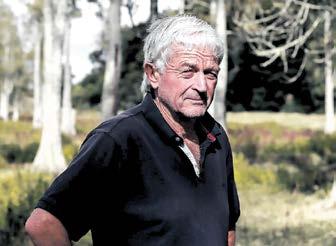
“We’re crossing our fingers that the end might now be in sight and that the final wording of Plan Change One works for the environment and is also sensible, practical and affordable for our productive sector.”
The Environment Court is working through some technical issues that Holmes hoped would be resolved in the next month or so.
“Federated Farmers’ efforts to propose pragmatic solutions for unworkable parts of the plan have made a significant difference,” Holmes said. “A lot is still uncertain.”
Original proposals included that farmers might not be allowed to cultivate within five metres of a water body, and there were significant limitations on when and how much nitrogen fertiliser could be applied.
“There’s a lot at stake, not just for the viability of local farms and the Waikato
The outcome will matter for all farmers around New Zealand as what happens here could set a precedent that will impact other regions. Other councils are watching on to see the outcome of this, so what happens here could have flow-on effects to other
The Environment Court ruling is not the final word on the

DairyNZ general manager of farm solutions and policy David Burger hopes to achieve workable evidencebased solutions for farmers.
The repeal of the Resource Management Act before the next election will have implications for these rules.
“It is still unclear exactly how a new Resource Management Act may affect the Plan Change One rules,” Holmes said.
“Federated Farmers is highly engaged in the process to replace the Resource Management Act, and we will continue to update farmers on implications for local rules as more information comes to light.”
DairyNZ was another organisation to appeal against the plan change.
General Manager of farm solutions and policy David Burger said DairyNZ had invested significant resource into the plan change for more than a decade. The organisation wishes to achieve workable evidencebased solutions for farmers while delivering on the outcomes sought through the vision and strategy for the Waikato Waipa catchment (Te Ture Whaimana).
“DairyNZ has concerns with the decisions version which places unnecessary costs and compliance on dairy farmers through resource consents and reporting requirements,” Burger said.
“DairyNZ’s evidence provided aims to reduce the unnecessary cost on farmers whilst still delivering on the outcomes sought.
“DairyNZ recognises that there are around 2000 dairy farms impacted by Plan Change One and although the decision is not yet made, we are working with dairy companies and Waikato Regional Council to support farmers through the process.”
Once a decision is made, DairyNZ will communicate it to farmers, and support farmers with education, awareness, and technical science support for those impacted.







Across 1. Vessel (4) 4. Lubricate (6) 8. Good-natured (7) 9. Hesitate (5) 10. In pristine condition (4) 11. Foresee (8) 13. Beautiful and
(9) 17. Collect discarded material (8)
Last week
19. Snooze (4) 21. In the midst of (5) 22. Celebrate
Across: 1. Blank, 4. Inmate, 7. Awn, 8. Barber, 9. Single, 10. Advertisement, 14. Igloo, 15. Meter, 18. Underestimate, 23. Sketch, 24. Engine, 25. Own, 26. Addled, 27. Dryer.
Down: 1. Bland, 2. Amble, 3. Karate, 4. Insist, 5. Minim, 6. Talon, 10. Adieu, 11. Valid, 12. Extra, 13. Three, 16. Method, 17. Attend, 19. Naked, 20. Extol, 21. Muggy, 22. Tuner.
OHCRAMMTAMCTFNLKMG NMARQUISSEKBPJQRNJ
MAROON MARQUIS
MARTIAL MASK MATRIX MEADOW MEDAL MEDICINE MELT MEMBER MERRY MICROBE

MILKY MIMIC MIND MISREAD MOGUL MOHAIR MOMENT MONKEY MORAL MOSAIC MOTH
MOTIF
MOULD MUESLI MUFFIN MUG MULLET MUTTON MYSTERY MYTH

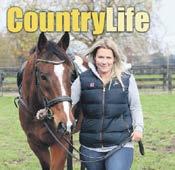





Did you know? The average ear (cob) of sweetcorn has 800 kernels arranged in 16 rows.
Biologists believe that sweetcorn evolved from a wild grain called ‚teosinte’ that still grows in the Mexican Highlands. But it took thousands of years before the teosinte evolved from a grassy plant into the first corn cobs.
And when Christopher Columbus landed in Cuba in 1492, he reported that his men had discovered ‘a sort of grain called maiz’. This was the first time Europeans had heard of the plant we call corn.
Corn is a starchy vegetable like potatoes, but its kernels are considered grains and can be milled into flour. But it’s also technically a fruit because it comes from the seed or flower of a plant, similar to tomatoes. And like many fruits, due to its sugar content, corn can be turned into syrup as well.
Fresh sweetcorn is versatile and popular family fare. Sunripened, fresh young corn is luscious, even when eaten raw. Corn in the husk can be cooked in water, baked, barbecued or microwaved. Covering the corn while cooking keeps it moist and flavourful.
Sweetcorn is ready to pick when the fine tassels or silk at the ends are brown.
Spiced sweetcorn salad
2 large corn cobs
2 tablespoons canola oil
1 tablespoon yellow mustard seeds
1 teaspoon each: whole cumin seeds, fennel seeds pinch ground cinnamon
1/2 red capsicum, seeded and diced
1/2 cup each: diced cucumber, roasted peanuts
1 red chilli, diced
2-3 tablespoons chopped coriander leaves and stems
1/4 cup lemon juice
To remove the kernels from the cob, strip off the husks, stand the corn on its straight end, then run a sharp knife down between the kernels and the core.
Heat the oil in a non-stick pan on medium-low. Add the spices and cook until the mustard seeds start to pop, about

30 seconds. Add the corn kernels and cook for 2-3 minutes, stirring occasionally. Add the red capsicum and continue cooking for another 3 minutes.
Remove from the heat. Add the cucumber, peanuts, chilli, coriander and lemon juice. Stir to combine. Serves 4 as a side dish.
Gluten-free corn fritters
1 large corn cob
3/4 cup chopped ham
2 spring onions, diced
1/2 small red capsicum, seeded and diced
4 tablespoons gluten-free self-raising flour
1 large egg, lightly beaten
3 tablespoons milk
2 tablespoons olive oil
To remove the kernels from the cob, strip off the husks, stand the corn on its straight end, then run a sharp knife down between the kernels and the core.
Place the corn kernels, ham, spring onions, GF flour, egg and milk in a medium bowl. Stir well.
Heat the oil in a large non-stick frying pan on medium. Add 1/4 cup measures of the fritter mixture in batches and panfry for 2-3 minutes each side, until golden and cooked through. Drain on paper towels. Great served with fresh fruit and a drizzle of maple syrup. Makes 8 fritters.
Corn with chilli n’ herb butter
These can be roasted in the oven, cooked in the microwave








or barbecued.
Chilli n’ Herb Butter: 125g butter, softened 1/4 cup each: coriander leaves, flat-leaf parsley, finely chopped
1 long red chilli, seeded and diced
1 clove garlic, crushed pinch cayenne pepper, optional
Corn: 6 sweetcorn cobs with husks
Combine the butter, herbs, chilli, garlic and cayenne pepper. Roll into a long log and wrap in plastic film. Freeze, until solid. Preheat the barbecue. Peel back the corn husks a little, remove the silk then close the husks back up. Place the cobs on a medium-heat barbecue for about 10 minutes, until sizzling. Turn often.
Remove from the grill. Carefully cut down the length of the husk with scissors or pull back and open out. Top with slices of the butter. Serve immediately. Serves 6.
Microwave corn cobs with basil butter
4 corn cobs with husks
Basil Butter: 50g butter, softened
4 tablespoons chopped fresh basil
2 tablespoons finely grated parmesan cheese freshly ground black pepper to taste
Discard any husks with imperfections.
To make the butter, beat all ingredients and spoon into a small ramekin.
To cook corn cobs in their husks place in the microwave oven and cook on high (100%) power for about 6 minutes. Serve with the butter. Serves 4.


OTOROHANGA SHWY 31, Kawhia Road 29 Hectares Bare Flat Land

Very well-located bare property just 4km north of Otorohanga on State Highway 31 and borders the Waipa River. Current and past use is cattle finishing, silage and hay harvesting. It is nearly all flat land, with the exception being a slight hill. It is well fenced and laned. The water is ex bore and distributed throughout the farm. The vendor has leased nine hectares of neighbouring land. In 2023 they undersowed ten hectares. They wintered 82 R2 cattle. Supplements - 67 silage bales in January and December. 2022 - 221 silage bales and 82 hay bales. 2024 - 64 R2 Steers and 200 hay bales made.


































































PURSUANT TO SECTION 41(6) OF THE RESERVES ACT 1977, Waipa District Council invites public submissions on the draft Lake Nga Roto Reserve Management Plan (RMP). The draft RMP can be viewed online at waipadc.govt.nz/ngarotoreview and at the Te Awamutu and Cambridge Council offices and libraries.
The draft RMP covers Lake Nga Roto, adjoining reserve land, paper roads surrounding this reserve land, the recently acquired property at 114 Bank Road and any land that may be acquired in the future to enhance the reserve and improve the health of Lake Nga Roto.
The draft RMP sets a clear vision prioritising the restoration and protection of Lake Nga Roto and directs management and development of the reserve, including what activities can occur and what infrastructure will be established or maintained. The draft RMP has been informed by feedback received through the first round of public consultation and engagement with mana whenua, Peat Lake Accord partners, adjoining landowners and lake users.
Members of the public and organisations are invited to formally submit on the draft RMP and will also have the opportunity to speak to their submissions at a public hearing.
Share your thoughts:
Submissions can be made online at waipadc.govt.nz/ngarotoreview, or emailed to haveyoursay@waipadc.govt.nz with ‘Lake Nga Roto Recreation RMP review’ in the subject line.
You can also write to us at Waipa District Council, Private Bag 2402, Te Awamutu 3840.
Submissions close at 5pm, Monday 14 April 2025.

AM and PM shifts
If you are an empathetic person with the “X” factor that all good care givers have and would like to join a committed caregiving team in a supportive work environment.


Andrew 0275 532 614

GRAZING available for dairy heifers. Ph 027 415 4122
GRAZING available – Dairy heifers, 70 head, excellent water, checked daily enquiries to 022 488 3887 or 07 889 6653
BMW Series 2 218i 2019, 32,000km, $24,000 ono. Ph/ Txt 0274 176 379
MAZDA CX-5, 2012, 126,000km, $14,000 ono. Ph/Txt 0274 176 379
Golf Clubs, Surfboard, Cricket Set, Household Goods, Furniture, Tools. SAT 22nd FEB8.00am 40 CARLTON ST “Everything Must Go!”
Tuesday, 4th March 7pm
Burchell Pavilion Te Awamutu
All welcome
Secretary - Laurel Phone 027 618 4454

JOHNSON Betty Eileen –Passed away peacefully on Thursday, 13th February 2025, aged 97 years, surrounded with family at Windsor Court Ohaupo. Cherished best friend and wife of the late Walter Raymond (74 years). Beloved mother of Chris & Bev, Lynore & Allan, Anne & Dennis. Grandmother of nine and great grandmother to 19. At Betty’s request a service has been held. All communications please to the Johnson family, PO Box 137, Te Awamutu 3840.
MAINTENANCE POSITION – TE AWAMUTU
Last Sunday of every month Email jim1@xtra.co.nz or ph Jim 027 366 5842 Pirongia Community Centre, Crozier St Sunday, February 23, 9am - 1pm











ADMINISTRATOR – TE AWAMUTU – PART TIME
Focused Physiotherapy is looking for a maintenance person who is a jack of all trades to join our team!
Focused Physiotherapy is seeking an administrator to join our team in a part time capacity in our Te Awamutu clinic. The successful applicant will be required to work Monday to Wednesday, 7:45am to 5pm. Our ideal candidate will be:
located in Te Awamutu, Ōtorohanga and Cambridge
We have a network of clinics and vehicles across the Waikato and require someone with an eye for detail, friendly attitude, organised personality and professional appearance to support our clinical team and keep our clinics and vehicles looking great!
-No referral needed from your GP, just call for an appointment -
• Well-presented and a good communicator both in person and on the phone
This position will be between 16-24 hours per week – days negotiable. Main base will be from our Te Awamutu site daily and you will be required to travel at times to undertake scheduled or urgent tasks.
• Able to interact with a variety of clients, age groups, ethnic groups and team members
• A team player with a positive attitude and willingness to learn and grow with the position
Requirements include: odd jobs in clinics, painting touch ups, vehicle coordination and cleaning, gardening and general maintenance tasks (but not limited to)
• Accurate with an eye for detail and able to follow and stick to processes
• Be able to multi task, prioritise and manage time effectively.
• Strong administration and computer based skills
• must have full licence and be able to pass NZ Police check If you are interested in applying for this role please email: recruitment@focusedgroup.co.nz
• Professional manner and confidentially essential If you would like to apply for this position, please send your CV and covering letter to recruitment@ focusedgroup.co.nz
ADMINISTRATOR – HAMILTON – FULL TIME
Focused Physiotherapy is expanding and we are looking for another superstar administrator to join our team. The clinic is located at the hospital end of Hamilton with parking available on site.






We are looking for casual relief teachers to add to our relieving pool. Maihiihi School is a fantastic little country school with amazing children and friendly staff. Situated only 15 mins from Otorohanga, 20 mins from Te Awamutu and 45 mins from Hamilton. Please contact principal@maihiihi.school.nz or give us a call to discuss 07-873-2887













- 2.8 Acres/hr

Husqvarna FR Series V-Twin - 21.5hp - 42” Cutting Width - 2.2 Acres/hr Easy to start, simple operation and proven performance. The ClearCut™ fabricated cutting deck provides unsurpassed cutting results.













Kawasaki FR Series V-Twin - 24.0hp 54” Cutting Width - 3.5 Acres/hr Take performance, productivity, and comfort to a whole new level. The intuitive operator interface, heavy-duty steel frame and commercial rated hydraulic system
Equipped with pedal-operated, hydrostatic transmission, and low vibe deck drive.

Kawasaki FR Series V-Twin - 23.0hp - 48” Cutting Width - 2.5 Acres/hr High performance mower with a ClearCut™ fabricated cutting deck designed for durability, performance and an even cut.

@ 3300 rpm - 48cm Cultivating Width - 15cm Working Depth - Rotational Speed 103 - 207 rpm
A light-weight, compact and easy to use tiller with great manoeuvrability.
Equipped with a high-quality transmission










